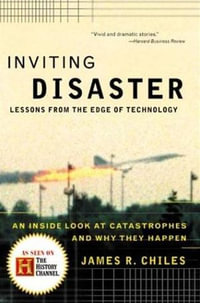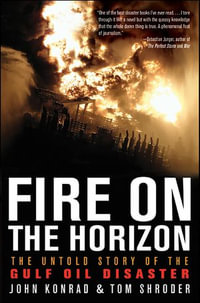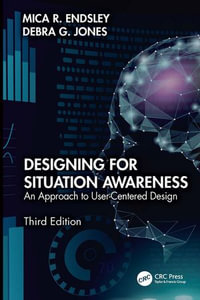
CBRN Protection
Managing the Threat of Chemical, Biological, Radioactive and Nuclear Weapons
By: Andre Richardt (Editor), Bernd Niemeyer (Editor), Frank Sabath (Editor), Birgit Hülseweh (Editor)
eBook | 24 April 2016 | Edition Number 1
At a Glance
ePUB
514 Pages
514 Pages
eBook
$123.99
or 4 interest-free payments of $31.00 with
orInstant Digital Delivery to your Booktopia Reader App
Read on
Android
eReader
Desktop
IOS
Windows
Originating in the armed forces of the early 20th century, weapons based on chemical, biological or nuclear agents have become an everpresent threat that has not vanished after the end of the cold war. Since the technology to produce these agents is nowadays available to
many countries and organizations, including those with terrorist aims, civil authorities across the world need to prepare against incidents involving these agents and train their personnel accordingly.
As an introductory text on NBC CBRN weapons and agents, this book leads the reader from the scientific basics to the current threats and strategies to prepare against them. After an introductory part on the history of NBC CBRN weapons and their international control, the three classes of nuclear/radiological, biological, and chemical weapons are introduced, focusing on agents and delivery vehicles. Current methods
for the rapid detection of NBC CBRN agents are introduced, and the principles of physical protection of humans and structures are explained.
The final parts addresses more general issues of risk management, preparedness and response management, as the set of tools that authorities and civil services will be needed in a future CBRN scenario as well as the likely future scenarios that authorities and civil services will be faced with in the coming years.
This book is a must-have for Health Officers, Public Health Agencies, and Military Authorities.
many countries and organizations, including those with terrorist aims, civil authorities across the world need to prepare against incidents involving these agents and train their personnel accordingly.
As an introductory text on NBC CBRN weapons and agents, this book leads the reader from the scientific basics to the current threats and strategies to prepare against them. After an introductory part on the history of NBC CBRN weapons and their international control, the three classes of nuclear/radiological, biological, and chemical weapons are introduced, focusing on agents and delivery vehicles. Current methods
for the rapid detection of NBC CBRN agents are introduced, and the principles of physical protection of humans and structures are explained.
The final parts addresses more general issues of risk management, preparedness and response management, as the set of tools that authorities and civil services will be needed in a future CBRN scenario as well as the likely future scenarios that authorities and civil services will be faced with in the coming years.
This book is a must-have for Health Officers, Public Health Agencies, and Military Authorities.
Read on
Android
eReader
Desktop
IOS
Windows
PREFACE
PART I: History and Treaties in CBRN -
Warfare and Terrorism
A GLANCE BACK -
MYTHS AND FACTS ABOUT CBRN INCIDENTS
Introduction
History of Chemical Warfare
Introduction to Biological Warfare
Introduction to Radiological and Nuclear Warfare
INTERNATIONAL TREATIES -
ONLY A MATTER FOR DIPLOMATS?
Introduction to the Minefield of Negotiations
Why It Is so Difficult to Implement International Regulations?
Historic Development of Treaties - the Link to the Incidents
Today's System of Treaties - a Global Network
Nuclear Weapons
Organizations
Conclusions and Where Does the Road Lead?
PART II: CBRN Characteristics -
Is There Something Inimitable?
CHEMICAL AGENTS -
SMALL MOLECULES WITH DEADLY PROPERTIES
Are Special Properties Required for Chemical Warfare Agents?
How can we Classify Chemical Warfare Agents?
Properties of Chemical Warfare Agents
Choking and Irritant Agents
Incapacitating Agents
Dissemination Systems of Chemical Warfare Agents
Conclusions and Outlook
CHARACTERISTICS OF BIOLOGICAL WARFARE AGENTS -
DIVERSITY OF BIOLOGY
What Is Special?
Types of Biological Agents
Risk Classification of Biological and Biological Warfare Agents
Routes of Entry
Origin, Spreading, and Availability
The Biological Event -
Borderline to Pandemics, Endemics, and Epidemics
The Bane of Biotechnology -
Genetically Engineered Pathogens
Conclusions and Outlook
CHARACTERISTICS OF NUCLEAR AND RADIOLOGICAL WEAPONS
Introduction to Nuclear Explosions
Direct Effects
Indirect Effects
Radiological Weapons
PART III: CBRN Sensors -
Key Technology for an Effective CBRN Countermeasure Strategy
WHY ARE RELIABLE CBRN DETECTOR TECHNOLOGIES NEEDED?
Introduction
A Concept to Track CBRN Substances
Low-Level Exposure and Operational Risk Management
Conclusions and Outlook
ANALYSIS OF CHEMICAL WARFARE AGENTS -
SEARCHING FOR MOLECULES
Analytical Chemistry - the Scientific Basis for Searching Molecules
Standards for Chemical Warfare Agent Sensor Systems and Criteria for Deployment
False Alarm Rate and Limit of Sensitivity
Technologies for Chemical Warfare Agent Sensor Systems
Testing of Chemical Warfare Agent Detectors
Conclusions and Future Developments
DETECTION AND ANALYSIS OF BIOLOGICAL AGENTS
What Makes the Difference?
The Ideal Detection and Identification Platform
Bioaerosols: Particulate and Biological Background
Aerosol Detection -
A Tool for Threat Monitoring
Identification of Biological Warfare Agents
Developing and Upcoming Technologies
Conclusions
MEASUREMENT OF IONIZING RADIATION
Why Is Detection of Ionizing Radiation So Important?
Physical Quantities used to Describe Radioactivity and Ionizing Radiation
Different Measuring Tasks Concerning Ionizing Radiation
Basics of Radiation Detectors
Gamma Dose Rate and Detection of Gamma Radiation
Conclusions and Outlook
PART IV: Technologies for Physical Protection
FILTER TECHNOLOGY -
CLEAN AIR IS REQUIRED
Filters -
Needed Technology Equipment for Collective and Individual Protection
General Considerations
What are the Principles for Filtration and Air-Cleaning?
Test Methods
Selection Process for CBRN Filters
Conclusions and Outlook
INDIVIDUAL PROTECTIVE EQUIPMENT -
DO YOU KNOW WHAT TO WEAR?
Basics of Individual Protection
Which Challenges for Individual Protection Equipment (IPE) Can Be Identified?
The Way to Design Individual Protective Equipment
Function
Ergonomics - a Key Element for Individual Protection Equipment
Donning and Doffing -
Training Is Required
Overview of IPE Items - They Have to Act in Concert
Quality Assurance
Workplace Safety
Future Prospects
COLLECTIVE PROTECTION - A SECURE AREA IN A TOXIC ENVIRONMENT
Why Is Collective Protection of Interest?
Collective Protection Systems -
Required for Different Scenarios
Basic Design
Conclusions and Outlook
PART V: Cleanup after a CBRN Event
DECONTAMINATION OF CHEMICAL WARFARE AGENTS - WHAT IS THOROUGH?
What Is Decontamination?
Dispersal and Fate of Chemical Warfare Agents
Decontamination Media for Chemical Warfare Agents
Selected Chemical Warfare Agents and Decont Reaction Schemes
Soman (GD)
VX
Catalysis in Decontamination
Decont Procedures
Conclusions and Outlook
PRINCIPLES AND PRACTICE OF DISINFECTION OF BIOLOGICAL WARFARE AGENTS - HOW CLEAN IS CLEAN ENOUGH?
General Principles of Disinfection and Decontamination
Mechanisms of Action of Biocides against Microorganisms
Levels of Disinfection
Biological Target Sites of Selected Biocides
The Spores Problem
Inactivation as Kinetic Process
Evaluation of Antimicrobial Efficiency
Carrier Tests versus Suspension Tests
Resistance to Biocide Inactivation - a Growing Concern
New and Emerging Technologies for Disinfection
'Is Clean Clean Enough' or 'How Clean Is Clean Enough'?
RADIOLOGICAL/NUCLEAR DECONTAMINATION -
REDUCE THE RISK
Why Is Radiological/Nuclear Decontamination So Special?
Contamination
Decontamination
Conclusions and Outlook
PART VI: CBRN Risk Management - Are We Prepared to Respond?
PREPAREDNESS
Introduction to Risk Management
Key Elements Influencing a Counter-CBRN Strategy
A Special Strategy for CBRN
Proliferation Prevention
Active Countermeasures
If Things Get Real: Responding to a CBRN Event
Research
Aftermath Action -
Lessons Learned
Conclusions and Outlook
INDEX
PART I: History and Treaties in CBRN -
Warfare and Terrorism
A GLANCE BACK -
MYTHS AND FACTS ABOUT CBRN INCIDENTS
Introduction
History of Chemical Warfare
Introduction to Biological Warfare
Introduction to Radiological and Nuclear Warfare
INTERNATIONAL TREATIES -
ONLY A MATTER FOR DIPLOMATS?
Introduction to the Minefield of Negotiations
Why It Is so Difficult to Implement International Regulations?
Historic Development of Treaties - the Link to the Incidents
Today's System of Treaties - a Global Network
Nuclear Weapons
Organizations
Conclusions and Where Does the Road Lead?
PART II: CBRN Characteristics -
Is There Something Inimitable?
CHEMICAL AGENTS -
SMALL MOLECULES WITH DEADLY PROPERTIES
Are Special Properties Required for Chemical Warfare Agents?
How can we Classify Chemical Warfare Agents?
Properties of Chemical Warfare Agents
Choking and Irritant Agents
Incapacitating Agents
Dissemination Systems of Chemical Warfare Agents
Conclusions and Outlook
CHARACTERISTICS OF BIOLOGICAL WARFARE AGENTS -
DIVERSITY OF BIOLOGY
What Is Special?
Types of Biological Agents
Risk Classification of Biological and Biological Warfare Agents
Routes of Entry
Origin, Spreading, and Availability
The Biological Event -
Borderline to Pandemics, Endemics, and Epidemics
The Bane of Biotechnology -
Genetically Engineered Pathogens
Conclusions and Outlook
CHARACTERISTICS OF NUCLEAR AND RADIOLOGICAL WEAPONS
Introduction to Nuclear Explosions
Direct Effects
Indirect Effects
Radiological Weapons
PART III: CBRN Sensors -
Key Technology for an Effective CBRN Countermeasure Strategy
WHY ARE RELIABLE CBRN DETECTOR TECHNOLOGIES NEEDED?
Introduction
A Concept to Track CBRN Substances
Low-Level Exposure and Operational Risk Management
Conclusions and Outlook
ANALYSIS OF CHEMICAL WARFARE AGENTS -
SEARCHING FOR MOLECULES
Analytical Chemistry - the Scientific Basis for Searching Molecules
Standards for Chemical Warfare Agent Sensor Systems and Criteria for Deployment
False Alarm Rate and Limit of Sensitivity
Technologies for Chemical Warfare Agent Sensor Systems
Testing of Chemical Warfare Agent Detectors
Conclusions and Future Developments
DETECTION AND ANALYSIS OF BIOLOGICAL AGENTS
What Makes the Difference?
The Ideal Detection and Identification Platform
Bioaerosols: Particulate and Biological Background
Aerosol Detection -
A Tool for Threat Monitoring
Identification of Biological Warfare Agents
Developing and Upcoming Technologies
Conclusions
MEASUREMENT OF IONIZING RADIATION
Why Is Detection of Ionizing Radiation So Important?
Physical Quantities used to Describe Radioactivity and Ionizing Radiation
Different Measuring Tasks Concerning Ionizing Radiation
Basics of Radiation Detectors
Gamma Dose Rate and Detection of Gamma Radiation
Conclusions and Outlook
PART IV: Technologies for Physical Protection
FILTER TECHNOLOGY -
CLEAN AIR IS REQUIRED
Filters -
Needed Technology Equipment for Collective and Individual Protection
General Considerations
What are the Principles for Filtration and Air-Cleaning?
Test Methods
Selection Process for CBRN Filters
Conclusions and Outlook
INDIVIDUAL PROTECTIVE EQUIPMENT -
DO YOU KNOW WHAT TO WEAR?
Basics of Individual Protection
Which Challenges for Individual Protection Equipment (IPE) Can Be Identified?
The Way to Design Individual Protective Equipment
Function
Ergonomics - a Key Element for Individual Protection Equipment
Donning and Doffing -
Training Is Required
Overview of IPE Items - They Have to Act in Concert
Quality Assurance
Workplace Safety
Future Prospects
COLLECTIVE PROTECTION - A SECURE AREA IN A TOXIC ENVIRONMENT
Why Is Collective Protection of Interest?
Collective Protection Systems -
Required for Different Scenarios
Basic Design
Conclusions and Outlook
PART V: Cleanup after a CBRN Event
DECONTAMINATION OF CHEMICAL WARFARE AGENTS - WHAT IS THOROUGH?
What Is Decontamination?
Dispersal and Fate of Chemical Warfare Agents
Decontamination Media for Chemical Warfare Agents
Selected Chemical Warfare Agents and Decont Reaction Schemes
Soman (GD)
VX
Catalysis in Decontamination
Decont Procedures
Conclusions and Outlook
PRINCIPLES AND PRACTICE OF DISINFECTION OF BIOLOGICAL WARFARE AGENTS - HOW CLEAN IS CLEAN ENOUGH?
General Principles of Disinfection and Decontamination
Mechanisms of Action of Biocides against Microorganisms
Levels of Disinfection
Biological Target Sites of Selected Biocides
The Spores Problem
Inactivation as Kinetic Process
Evaluation of Antimicrobial Efficiency
Carrier Tests versus Suspension Tests
Resistance to Biocide Inactivation - a Growing Concern
New and Emerging Technologies for Disinfection
'Is Clean Clean Enough' or 'How Clean Is Clean Enough'?
RADIOLOGICAL/NUCLEAR DECONTAMINATION -
REDUCE THE RISK
Why Is Radiological/Nuclear Decontamination So Special?
Contamination
Decontamination
Conclusions and Outlook
PART VI: CBRN Risk Management - Are We Prepared to Respond?
PREPAREDNESS
Introduction to Risk Management
Key Elements Influencing a Counter-CBRN Strategy
A Special Strategy for CBRN
Proliferation Prevention
Active Countermeasures
If Things Get Real: Responding to a CBRN Event
Research
Aftermath Action -
Lessons Learned
Conclusions and Outlook
INDEX
ISBN: 9783527650187
ISBN-10: 3527650180
Published: 24th April 2016
Format: ePUB
Language: English
Number of Pages: 514
Audience: General Adult
Publisher: Wiley
Country of Publication: DE
Edition Number: 1
You Can Find This eBook In
This product is categorised by
- Non-FictionIndustry & Industrial StudiesIndustrial Relations, Health & SafetyHealth & Safety Issues
- Non-FictionScienceChemistry
- Non-FictionMedicineMedicine in GeneralPublic Health & Preventive Medicine
- Non-FictionEngineering & TechnologyIndustrial Chemistry & Manufacturing TechnologiesIndustrial Chemistry
























